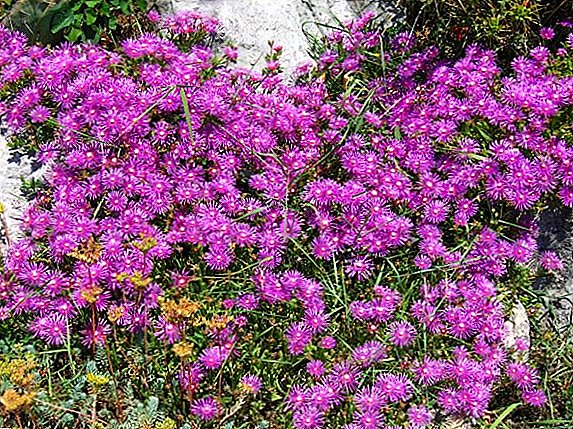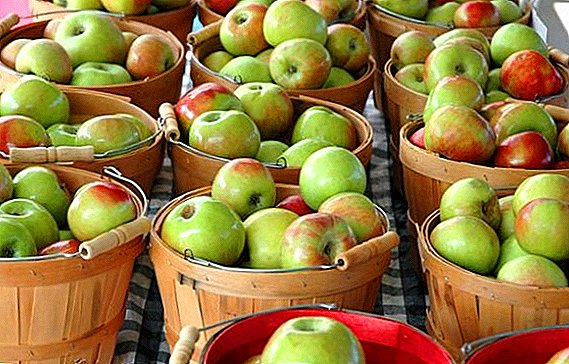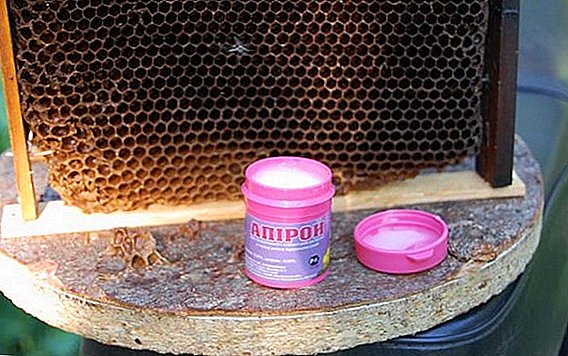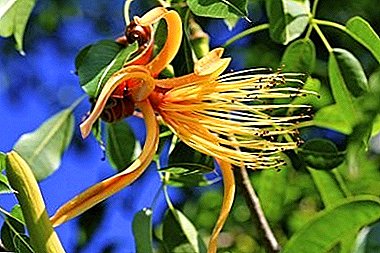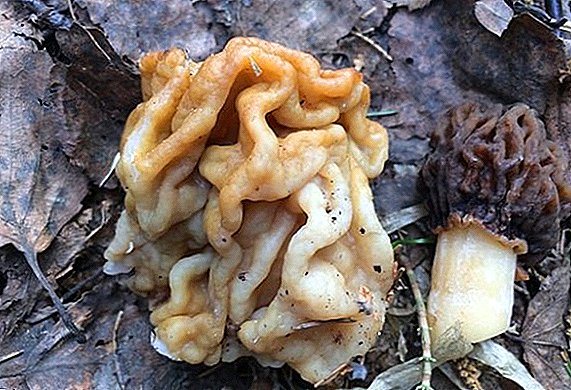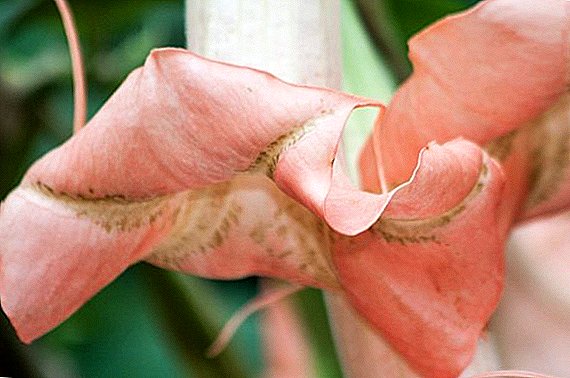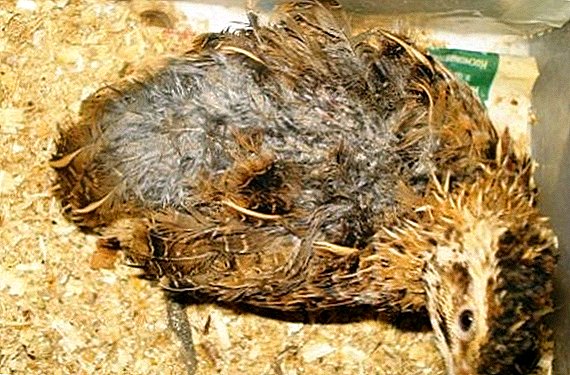 Quails attract poultry farmers with a quick return on investment in the cultivation of funds, as well as their immunity and viability. Therefore, the main cause of disease in birds is considered to be errors in care or miscalculations made in the organization of the place of detention and conditions. This article is devoted to a brief overview of possible diseases, their treatment and prevention.
Quails attract poultry farmers with a quick return on investment in the cultivation of funds, as well as their immunity and viability. Therefore, the main cause of disease in birds is considered to be errors in care or miscalculations made in the organization of the place of detention and conditions. This article is devoted to a brief overview of possible diseases, their treatment and prevention.
Infectious (infectious) diseases
Infections most commonly affect debilitated birds or young animals that do not have a vaccine. Unfortunately, not all quail diseases are treatable.
Aspergillosis
Symptoms:
- Labored breathing.
- Thirst.
- Lack of appetite.
- Lethargy and apathy.
- The mucus from the nostrils.
- The blue of the beak and skin of the paws.
Treatment: The sick individuals are watered with nystatin, at a dosage of 350 IU per liter of water.  Prevention: all livestock to prevent the spread of soldered potassium iodide or sodium diluted in water. Mechanical cleaning of the entire premises, including feeders and drinkers. Be sure to carry out disinfection with the help of special preparations.
Prevention: all livestock to prevent the spread of soldered potassium iodide or sodium diluted in water. Mechanical cleaning of the entire premises, including feeders and drinkers. Be sure to carry out disinfection with the help of special preparations.
Read also about the treatment of animal diseases: chickens (diseases of the eyes, legs; infectious and non-infectious diseases of broilers), ducks (ducklings, musk ducks), geese, rabbits, pigs, goats.
Atypical Plague (Newcastle disease)
Symptoms:
- Temperature rise.
- Hoarse breath.
- Weakness.
- Putrid smell from the beak.
- Increase goiter.
- Diarrhea with blood.
 A characteristic symptom of Newcastle disease in poultry is cramps and head twitching. Treatment: due to the rapid spread of treatment is not carried out, the livestock is killed.
A characteristic symptom of Newcastle disease in poultry is cramps and head twitching. Treatment: due to the rapid spread of treatment is not carried out, the livestock is killed.Prevention: exclude penetration of wild birds into the room in which quails are kept, to their feeders. Acquired chicks need to be kept separately for some time to make sure there is no virus. After disposing of the sick herd the room is disinfected.
Read also about the breeding of quail at home and the content of quail laying.
Helminthiasis
 Symptoms:
Symptoms:
- Ruffled feathers.
- Cough.
- Labored breathing.
- Weight loss.
- Loss of productivity.
Treatment: Thiobendazole in a dose of one and a half grams per kilogram of feed.
Prevention: regular sanitary cleaning, absence of wild birds, rodents. Infected individuals are kept separately, and healthy ones are taken for analysis.
Did you know? In the UK, most farms for poultry farmers have a convenient service. To make an analysis of bird droppings, it is enough to send it by mail. The answer and the result is obtained in the same way.
Colibacteriosis
Symptoms:
- Blue beak.
- Diarrhea.
- Loss of appetite.
- Thirst.
Treatment: the herd is drunk with Enronit for five days.
Prevention:
- Clean rooms and dishes.
- Regular airing.
- Elimination of humidity.
- Compliance with sanitary standards poultry breeder (overalls).
- Maintain the desired temperature.
- In case of infection, the room is disinfected.
Important! Since a dirty egg shell can cause a future chick to become infected, in the production of eggs, it is dusted with formaldehyde vapors.
Conjunctivitis
Signs of illness:
- Swollen and reddened eyelids.
- Inflammation of the mucosa.
- Discharge of pus from the eyes.
- Flaccidity and rejection of food.
 Treatment: chamomile infusions, tetracycline ointment, inclusion of vitamin A in the diet
Treatment: chamomile infusions, tetracycline ointment, inclusion of vitamin A in the diet
Preventive measures:
- Avoid drafts in the room.
- Regularly clean the litter from dust and dirt, ventilate the room.
- Monitor the presence in the diet necessary for the development of vitamins.
We advise you to read about the treatment and prevention of similar diseases in chickens: Newcastle disease, aspergillosis, conjunctivitis, ornithosis.
Smallpox
Symptoms:
- Education pustules around the eyes and on the head.
- Plaque on mucous eyes and throat.
- Fever.
Treatment: an aqueous solution of tetracycline (tablet per liter of water) is given for five days.
Prevention: for individuals in contact with a sick bird, potassium iodide is given with water. Feeding quails should include an adequate amount of vitamin Retinol. 
Ornithosis (bird flu)
Symptoms:
- Loss of appetite.
- Weakness.
- The mucus from the nostrils.
- Nervous system disorders.
- Digestive problems.
- Conjunctivitis.
Treatment: do not carry out, the sick bird is killed and disposed of.
Prevention: A healthy bird in contact with infected specimens is prescribed tetracycline at a dosage of 40 mg per 1 kg of weight, along with feed. For a week, eggs are treated with formaldehyde vapors. To prevent disease, they observe general sanitary hygiene in the room.
Important! Ornithosis is dangerous to humans. Contact with a sick bird must be in a protective suit, always with a mask on his face.
Pullorosis
Signs of illness:
- Loss of coordination
- Labored breathing.
- Eyes are more often closed.
- Diarrhea with mucus.
- Cloaca glued droppings.
 Treatment: impractical, sick birds are destroyed, carcasses are disposed of. The rest of the birds are examined, analyzed, disinfected the room, all inventory and eggs.
Treatment: impractical, sick birds are destroyed, carcasses are disposed of. The rest of the birds are examined, analyzed, disinfected the room, all inventory and eggs.
Preventive measures are in compliance with sanitary standards, temperature and humidity, feed must be of high quality.
Cholera (pasteurellosis)
Symptoms:
- Diarrhea with blood.
- Blue skin and beak.
- Thirst.
- May be asymptomatic.
Treatment: hopelessly, sepsis begins in a few days and the bird dies. Carcasses are disposed of, disinfect all the rooms.
Prevention:
- Compliance with sanitary standards.
- Eliminate contact with wild birds.
- Vaccination.
Find out what measures are used for pasteurellosis in domestic chickens.
Noncommunicable diseases
Non-communicable diseases can be caused by parasites, improper care, poor-quality feeds or the lack of sufficient amounts of the necessary minerals and vitamins.
Avitaminosis
Symptoms:
- Digestive upset.
- Apathy.
- Eye Inflammation.
- Blanching of the mucous membranes.
- Tousledness.
- Deterioration of coordination.
- Decreased productivity.
Treatment and Prevention consist in an additive in a diet of sources of vitamins B, A, E, C, carotene, calcium. These are grass of leguminous plants, meat and bone meal, green and yellow vegetables, needles, silage, fodder yeast, oil of cereal germs. When using commercial feed, choose special for quail, with a balanced composition and additives.
Alopecia (alopecia)
By signs Alopecia are bald areas of the body, falling feathers and down.  Treatment: a veterinarian prescribes a diet in which such elements and substances are present:
Treatment: a veterinarian prescribes a diet in which such elements and substances are present:
- vitamins - A, B;
- trace elements - sulfur, iodine;
- protein 1 5 diet;
- amino acids - cystine, methionine.
Preventive measures consist in a balanced diet and the absence of drafts, compliance with the norms of humidity and temperature content.
Read also about the treatment of alopecia chickens.
Dropsy (ascites)
Signs of dropsy:
- The bird does not want to get up.
- The abdominal region is swollen.
- Awkward, heavy movements.
 Treatment: the abdominal wall is punctured with a medical syringe and the fluid accumulated there is pumped out. Further, with the help of a veterinarian, the diet is corrected, water-salt metabolism is especially important. Bird give diuretics, vitamins.
Treatment: the abdominal wall is punctured with a medical syringe and the fluid accumulated there is pumped out. Further, with the help of a veterinarian, the diet is corrected, water-salt metabolism is especially important. Bird give diuretics, vitamins.
Prevention: carefully monitor the diet, quality of feed.
Oviduct prolapse
Signs of:
- The bird is sitting ruffled.
- Loss of appetite.
- Apathy.
Treatment they do not carry it out, because a fallen oviduct deprives the bird of the ability to be carried, it is slaughtered for meat.  Preventive measures:
Preventive measures:
- It is necessary to observe the correct balance of vitamins, feed must be of high quality.
- Do not encourage quails to rush ahead of schedule.
- Be sure to ventilate the room for access to fresh air.
Learn more about treating oviduct inflammation in chickens.
Salmonellosis
Signs of:
- Drowsiness.
- Lethargy.
- Diarrhea.
- Intestinal obstruction.
- Nervous disorders.
Treatment do not carry out, patients are disposed of. Those contacted with infected individuals are sealed with antibacterial drugs (Avidox, Eriprim), according to the dosage prescribed by the veterinarian. All premises and equipment are treated with caustic soda, 4% solution.
Prevention is a series of measures:
- Recently purchased individuals are kept separately until their health status is ascertained.
- Vaccinating young animals, later - adult birds.
- Observe cleanliness in the room, especially pay attention to nests, feeders and drinkers.
- Probiotics are given to newly hatched chicks at the first feeding.
Video: salmonellosis in quail
Fractures and injuries
The causes of the resulting grass are hidden in the fearful nature of quail. Frightened by noise or movement, they make sharp jumps, flapping their wings. In the confined space of an open-air cage or cage, this leads to damage to the limbs, body and head.
Symptoms:
- Loss of appetite.
- Clumsy movement.
- Hematomas and tumors.
- Traces of dried dried offal
Treatment:
- With an open wound, feathers are cut around.
- The wound is treated with antiseptic, bandage.
- In the case of a fracture or dislocation, a splint is applied.
Video: tire at the turn of the foot in quail
Prevention consists of the following actions:
- Cages, aviaries are located away from a potential source of noise.
- Doing any work next to the aviary, they put thick fabric on it.
- During the care of birds do not make sudden movements, do not speak loudly.
- When arranging the cage, the sides are best made not transparent so that the bird can see the limits of its movement.
- The height of the cage is no more than 25 cm, and a soft net is stretched on the ceiling.
Did you know? Japanese scientists have shown that a schoolboy who eats quail eggs before class has the best assiduity, memory and ability to assimilate educational material.
Rasklev (cannibalism)
Avian cannibalism is not so much a disease as a pathology of behavior. This anomaly is caused by such factors:
- too bright or, conversely, lack of necessary lighting;
- too tight space;
- not enough food troughs and drinkers, not enough food;
- incorrect diet;
- an attempt to establish themselves in the new flock of new;
- scare;
- self-affirmation during puberty.
 You can notice the signs of wounds on the bodies of birds that have undergone aggression.
You can notice the signs of wounds on the bodies of birds that have undergone aggression.
Treatment: wounds are washed, disinfected. Analyze the conditions of detention, correct all errors made earlier. Too aggressive individuals are isolated.
Prevention:
- Think in advance about the area of the aviary to prevent crowding.
- Consider the number of feeders and drinkers.
- To exclude external irritants near the place of content.
- Create an optimal mode, the diet for quail.
Video: experience in treating quail diseases
In conclusion, we note: beginner poultry farmers should take into account that the successful breeding of quails depends primarily on proper care. Before you start a bird, you should think over everything to the smallest detail: the room, the arrangement, the diet and the cost of it.



